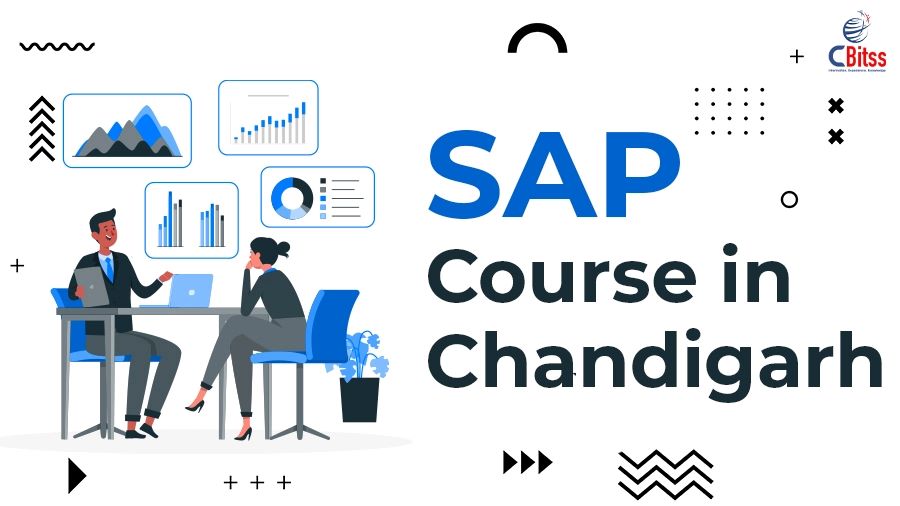SAP Training in Chandigarh
Core components of SAP FICO
Introduction
A crucial component of the SAP ERP system is SAP FICO, which stands for Financial Accounting (FI) and Controlling (CO). Its objective is to streamline and integrate financial procedures in order to guarantee accurate and timely financial reporting and management. This article will look at the key components of SAP FICO and how their seamless integration results in an all-encompassing financial management solution. If you’re looking to enhance your skills in this domain, consider SAP Training in Chandigarh to gain hands-on experience and in-depth knowledge.
What is SAP FICO?
The SAP ERP system, which includes both Financial Accounting (FI) and Controlling (CO), is not complete without SAP FICO. Its purpose is to gather, organize, and evaluate financial data in order to present a complete picture of the financial health of a company. SAP FICO provides precise financial data to improve decision-making and guarantee legal compliance.
What are the Main Components of SAP FI?
SAP FI (Financial Accounting) focuses on external reporting and includes several key components:
General Ledger (GL): The GL serves as the central repository for all financial transactions, providing a comprehensive view of financial accounts.
Accounts Receivable (AR): Manages customer transactions, including invoices, credit memos, and payments.
Accounts Payable (AP): Handles vendor transactions, including purchase orders, invoices, and payments.
Asset Accounting (AA): Tracks and manages an organization’s fixed assets.
Bank Accounting (BA): Manages bank transactions and reconciliation processes.
Consolidation: Facilitates the consolidation of financial statements from multiple entities within an organization.
What are the Key Elements of SAP CO?
SAP CO (Controlling) focuses on internal reporting and management, providing insights into costs and profitability. Key elements include:
Cost Element Accounting: Identifies and categorizes costs and revenues.
Cost Center Accounting: Tracks and controls costs by department or location.
Profit Center Accounting: Analyzes the profitability of different business segments.
Internal Orders: Monitors costs related to specific projects or tasks.
Product Costing: Determines the cost of manufacturing products or services.
Profitability Analysis (PA): Evaluates the profitability of products, customers, or market segments.
How Do General Ledger and SubLedgers Interact in SAP FI?
The General Ledger (GL) is the backbone of SAP FI, containing all financial transactions. Subledgers, such as Accounts Receivable (AR) and Accounts Payable (AP), record specific transactions related to customers and vendors. These subledgers post summary data to the GL, ensuring that the GL contains a complete and accurate financial picture. This interaction allows for detailed tracking and reconciliation while maintaining a streamlined overview in the GL.
What Role Does Asset Accounting Play in SAP FICO?
Asset Accounting (AA) in SAP FI is crucial for managing an organization’s fixed assets, such as buildings, machinery, and equipment. It tracks asset acquisitions, transfers, depreciations, and retirements. AA integrates with the GL to ensure that assetrelated financial data is accurately reflected in financial statements. This integration supports compliance with accounting standards and provides insights into asset value and depreciation, aiding in strategic decisionmaking.
How Does Cost Center Accounting Integrate with FI and CO?
Cost Center Accounting in SAP CO focuses on monitoring and controlling costs within specific departments or locations. Each cost center represents a unit within the organization where costs are incurred. These costs are then allocated to various activities or projects. The integration with FI ensures that all expenses recorded in cost centers are reflected in the GL, providing a detailed view of where and how costs are being incurred. This integration aids in budgeting, cost control, and performance analysis.
What is the Significance of Profit Center Accounting in SAP CO?
Profit Center Accounting (PCA) is essential for analyzing the profitability of different business segments, such as product lines, divisions, or geographical regions. Each profit center operates like an independent entity, with its own revenue and expense tracking. PCA integrates with both FI and CO, ensuring that financial transactions related to profit centers are accurately captured and analyzed. This integration supports strategic planning by identifying profitable and underperforming segments, facilitating informed decision making.
How Do Internal Orders Enhance Financial Control?
Internal Orders in SAP CO are used to track costs related to specific projects, tasks, or events. They provide a means to monitor and control expenditures that do not fall under regular cost centers or profit centers. Internal Orders integrate with FI to ensure that all costs and revenues associated with specific orders are recorded in the GL. This integration enables precise tracking of project costs, budget compliance, and financial accountability.
How Do SAP FI and CO Components Integrate for Comprehensive Reporting?
The integration between SAP FI and CO components ensures comprehensive and accurate financial reporting. Data from various subledgers and cost elements flow into the General Ledger, providing a consolidated view of financial transactions. Cost center and profit center accounting, along with internal orders and product costing, offer detailed insights into costs and profitability. This seamless integration supports robust financial analysis, compliance with accounting standards, and informed decisionmaking.
Conclusion
Designed to unify and streamline financial processes, SAP FICO is a potent module that is part of the SAP ERP system. General Ledger, Accounts Receivable, Accounts Payable, Asset Accounting, Cost Center Accounting, Profit Center Accounting, and Internal Orders are among its essential parts that come together to offer a complete financial management solution. Accurate financial reporting, efficient cost control, and strategic decision-making are all ensured by the integration of these elements. Leveraging the full potential of this powerful financial management system requires an understanding of SAP FICO’s fundamental components and how they interact. For those looking to gain expertise in this field, SAP Training in Chandigarh offers a comprehensive curriculum that covers all aspects of SAP FICO, equipping learners with the necessary skills to excel in financial management using SAP ERP.

